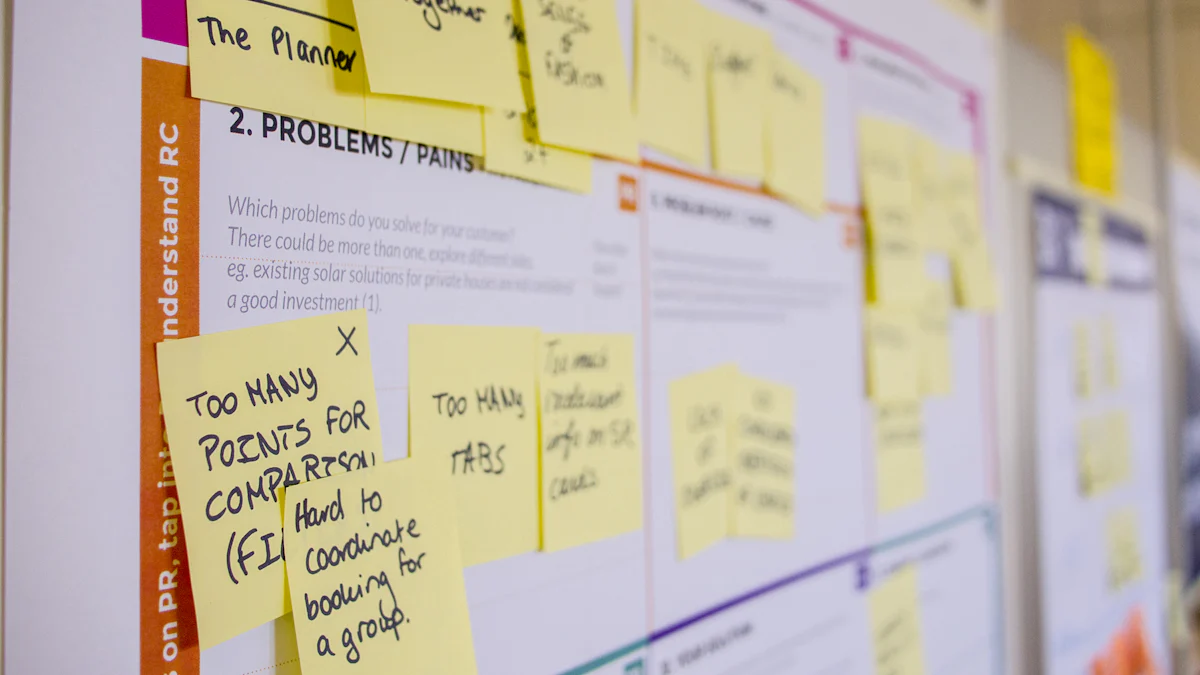What Are Release Toggles and Why Are They Important in Software Development

Release toggles let you enable or disable features in your software without redeploying code. They act as switches embedded in your application, giving you control over which features users can access. This flexibility allows you to test new functionalities, manage risks, and respond quickly to issues. For software development teams, release toggles streamline workflows and reduce downtime. They also support faster delivery by decoupling feature releases from deployment cycles. In today’s fast-paced software development environment, these tools are essential for maintaining agility and innovation.
Key Takeaways
Release toggles let you turn features on or off easily. This helps you avoid changing the code every time.
Feature toggles lower risks by letting you safely add unfinished code. You can also quickly turn off features that cause problems.
Toggles help test new features with a small user group. This way, you can get feedback before sharing it with everyone.
Adding release toggles to your CI/CD process helps teams work together. It also allows for frequent and safe software updates.
Check and remove unused toggles often. This keeps your code simple and avoids future problems.
What Are Release Toggles?

Definition and Key Concepts
Release toggles, also called feature toggles or feature flags, are tools that allow you to control the activation of specific features in your software. These toggles let you ship incomplete or untested code to production without exposing it to users. This approach supports trunk-based development and Continuous Delivery by enabling teams to integrate in-progress features into a shared branch while still allowing deployment at any time. By separating feature release from code deployment, release toggles reduce risks and make deployments more frequent and safer compared to traditional methods.
Types of Release Toggles
Feature Toggles
Feature toggles are the most common type. They allow you to enable or disable specific features in your application. For example, you can use them to test a new user interface with a small group of users before rolling it out to everyone.
Experiment Toggles
Experiment toggles are used for A/B testing. They help you compare different versions of a feature to determine which one performs better. Companies like Netflix and Facebook use these toggles to personalize user experiences and optimize system performance.
Permission Toggles
Permission toggles control access to features based on user roles or permissions. For instance, you might use them to provide premium features only to paid subscribers.
Operational Toggles
Operational toggles manage features related to system performance or reliability. You can use them to turn off resource-intensive features during peak traffic or to quickly deactivate a malfunctioning feature.
Common Use Cases
Gradual Rollouts
Gradual rollouts let you release features to a small group of users first. This approach helps you monitor performance and gather feedback before a full release. Companies like Google and Dropbox use this method to test new features on live traffic while minimizing risks.
A/B Testing
A/B testing allows you to experiment with different feature versions. Feature toggles make it easy to switch between versions in real-time, helping you identify the best option based on user engagement.
Emergency Deactivation
Sometimes, a feature might cause unexpected issues. Feature toggles act as feature switches, letting you quickly deactivate problematic features without redeploying code. This ensures a smoother user experience and faster issue resolution.
The Purpose of Release Toggles in Software Development
Decoupling Deployment from Feature Activation
Release toggles allow you to separate the process of deploying code from activating features. This means you can include new features in your main codebase without making them visible to users. By doing this, you ensure that incomplete or untested features do not disrupt the production environment.
Feature flags are key tools for decoupling deployment from release. They allow you to toggle features on and off without deploying new code, providing a controlled environment for testing and gradual rollouts.
This decoupling offers several advantages:
It prevents production environments from becoming unstable.
It lets you focus on development without worrying about exposing unfinished features.
It aligns feature releases with strategic goals, such as marketing campaigns or product launches.
By using feature toggles, you can deploy code more frequently and safely, which is essential for modern software development.
Enabling Controlled Rollouts
Controlled rollouts are a powerful way to manage risks when introducing new features. Feature toggles let you release features to specific user groups, such as beta testers or a small percentage of your audience. This phased approach helps you identify potential issues early and gather valuable feedback.
Some technical mechanisms that enable controlled rollouts include:
Feature toggles that allow you to enable or disable features for all users or specific groups.
Experiment toggles that facilitate A/B testing by splitting traffic between different feature versions.
Operational toggles that let you adjust system behavior quickly in response to issues.
With these tools, you can fine-tune your testing and rollout strategy, ensuring a smooth experience for your users.
Supporting Continuous Integration and Delivery
Feature toggles play a critical role in supporting continuous integration and delivery (CI/CD) practices. They allow you to merge incomplete features into the main codebase without breaking existing functionality. This makes it easier for your team to work collaboratively and deploy updates more frequently.
Feature toggles also enable you to:
Launch, control, and measure features at scale.
Safely deploy untested features while keeping them hidden from users.
Streamline the release process by decoupling feature deployment from feature activation.
By integrating feature toggles into your CI/CD pipeline, you can improve efficiency and maintain a high level of quality in your software development process.
Facilitating Experimentation and Innovation
Release toggles empower you to experiment with new ideas and foster innovation in your software development process. They provide a safe and controlled environment for testing features in real-world scenarios. By using toggles, you can gather valuable insights without risking the stability of your application.
One of the most effective ways toggles facilitate experimentation is through A/B testing. You can show different versions of a feature to various user groups simultaneously. This approach helps you collect real data on user preferences and behavior. For example, you might test two homepage layouts to see which one drives more engagement. The results guide your decisions, ensuring you implement the most effective version.
Toggles also allow you to test features in live environments. Instead of relying solely on simulated conditions, you can enable features for a small subset of users. This method provides critical behavioral data and highlights potential issues before a full rollout. For instance, you could introduce a new search algorithm to 5% of your users and monitor its performance under actual usage.
Dynamic switching between feature versions is another advantage. You can toggle between different implementations of a feature in real-time. This flexibility enables you to adapt quickly based on user feedback or changing requirements. Imagine testing multiple pricing models for a subscription service. Toggles let you compare their impact on user retention and revenue.
By integrating release toggles into your workflow, you create opportunities to innovate without compromising quality. They help you make data-driven decisions, refine your features, and stay ahead in a competitive market. Experimentation becomes a seamless part of your development process, driving continuous improvement and creativity.
How Do Release Toggles Work?
Integration into Codebases
Configuration Files and Databases
You can integrate feature toggles into your codebase by using configuration files or databases. These methods store the toggle states, making it easy to update them without modifying the code. Configuration files work well for simple toggles, while databases are better for managing complex toggles across multiple environments. For example, you might store a toggle in a JSON file or a database table, specifying whether a feature is enabled or disabled. This setup ensures that toggles remain centralized and accessible for updates.
To integrate release toggles effectively, follow these steps:
Implement toggles in your code with clean practices.
Connect toggles to your CI/CD pipeline for automation.
Use metrics and feedback to evaluate toggle performance.
Remove toggles that are no longer needed.
This process ensures that your toggles remain efficient and manageable.
Runtime Evaluation
Runtime evaluation allows toggles to be checked and applied while the application is running. This approach offers several advantages:
It lets you release features under development without making them live.
You can toggle off problematic features instantly.
It supports A/B testing to identify user preferences.
Teams can test features safely in production.
You can update live features without redeployment.
Runtime evaluation provides flexibility and safety, making it a preferred method for managing feature toggles.
Runtime Control and Monitoring
Tools for Feature Toggle Management
You can use tools like Split to manage feature toggles effectively. These tools centralize toggle configurations, providing a single source of truth. They also simplify updates and monitoring across environments. By using such tools, you can streamline your toggle management process and ensure consistency.
Logging and Monitoring Usage
Monitoring toggle usage is essential for understanding their impact. Logging systems can track when toggles are activated or deactivated. This data helps you evaluate feature performance and identify potential issues. For example, you might monitor how a new feature affects user engagement. Regular monitoring ensures that toggles contribute positively to your development process.
Examples of Implementation
Web Application Feature Flags
Feature flags are widely used in web applications. For instance, an ecommerce site might use a toggle to hide a new Estimated Shipping Date feature until it works for all shipping partners. This approach allows you to ship incomplete features while refining them in production. It also aligns with Continuous Delivery principles, enabling frequent and safe deployments.
Mobile App Gradual Rollouts
Mobile apps benefit greatly from gradual rollouts. Feature toggles let you release new features to specific user groups, reducing risks. For example, you might enable a new feature for 10% of users to gather feedback. This controlled approach ensures smoother adoption and minimizes disruptions. It also supports continuous deployment, helping you stay competitive.
Benefits of Using Release Toggles

Reducing Deployment Risks
Release toggles significantly lower the risks associated with deploying new features. They allow you to ship incomplete or untested code to production without exposing it to users. This invisibility ensures that your production environment remains stable even as you integrate new changes. If a bug or issue arises, you can deactivate the feature instantly without redeploying the application. This quick rollback capability protects your system and reputation.
You can also experiment with new features without affecting the entire user base. Gradual rollouts, enabled by feature toggles, let you test features with a small group of users. This approach helps you identify and fix issues early, minimizing the impact on your audience. By using toggles, you create a safer environment for innovation and testing.
Release toggles are essential for trunk-based development, where code is merged frequently. They allow you to deploy new features without activating them, reducing deployment risks.
Increasing Flexibility in Releases
Feature toggles give you the flexibility to control feature visibility without redeploying your application. You can turn features on or off instantly, enabling quick responses to unexpected issues. This capability minimizes downtime and ensures a smoother user experience.
Toggles also allow you to merge incomplete features into the main codebase while keeping them hidden. This aligns with agile and DevOps practices, supporting continuous integration and deployment. For example, you can activate a feature for specific user groups or regions, enabling controlled experimentation and rapid iteration. This flexibility helps software development teams adapt quickly to changing requirements.
By using feature toggles, you can manage releases more effectively. They empower you to align feature rollouts with business goals, such as marketing campaigns or product launches, without disrupting your development process.
Supporting Agile and CI/CD Practices
Feature toggles play a vital role in supporting agile and CI/CD practices. They allow you to separate feature rollout from code deployment, enabling frequent and safe updates. You can merge new code into the main branch without disrupting production, which is especially useful in trunk-based development.
Toggles also enhance collaboration within software development teams. They let you test new functionality directly in production while keeping it hidden from users. Automated scripts can manage toggles, streamlining the CI/CD process. This approach ensures that your team can launch, control, and measure features effectively.
By integrating feature toggles into your workflow, you create a more efficient development process. They help you maintain a high level of quality while delivering updates faster, keeping your software competitive in a dynamic market.
Enabling Faster Feedback and Iteration
Release toggles help you gather feedback and iterate on your software faster. They allow you to ship incomplete or untested code to production without exposing it to all users. This approach supports continuous deployment and lets you test features in real-world environments. By doing this, you can identify issues early and make improvements quickly.
Here’s how release toggles enable faster feedback and iteration:
You can merge unfinished features into the main codebase while keeping them hidden. This practice, known as trunk-based development, allows frequent code integration and faster iterations.
Feature toggles let you release new features gradually. This controlled rollout helps you gather user feedback in smaller, manageable groups.
You can test features that are still in progress. This flexibility reduces delays and ensures that your team can respond to user needs promptly.
By using release toggles, you create a feedback loop that accelerates your development process. You can experiment with new ideas, gather insights, and refine your features without risking the stability of your application.
Enhancing User Experience
Feature toggles play a crucial role in improving user experience. They allow you to test and optimize features based on real user behavior. By selectively enabling features for specific user groups, you can tailor your software to meet diverse needs.
Here are some ways release toggles enhance user experience:
Experiment toggles enable A/B testing. You can send different users down different paths to determine which feature version works best for them.
Permissioning toggles let you customize features based on user roles. For example, you can offer premium features exclusively to paying customers.
You can test features in a live production environment. This approach helps you gather critical data on user preferences and behavior.
Feature toggles allow you to present different versions of a feature to various user segments simultaneously. This strategy provides valuable insights into what users prefer.
By leveraging these capabilities, you can create a more personalized and satisfying experience for your users. Release toggles give you the tools to adapt quickly and deliver features that truly resonate with your audience.
Best Practices for Feature Toggle Management
Proper Configuration and Documentation
Effective feature toggle management begins with proper configuration and documentation. You should deploy toggles strategically and keep their inventory low. This approach reduces the complexity of managing toggles and minimizes the risk of errors. Always prune old toggles as soon as their lifecycle ends. This practice prevents unnecessary clutter in your codebase.
To ensure toggles are well-configured, follow these tips:
Use multi-level flags or staged rollouts to secure toggles and control their impact.
Design configurations that minimize system resource usage.
Plan for quick reversion of changes if issues arise during testing.
Keeping the scope of each toggle small also helps. Small toggles are easier to debug and less likely to cause confusion. Clear documentation for each toggle, including its purpose and expected removal conditions, ensures your team can manage them efficiently.
Managing the Toggle Lifecycle
Avoiding Stale Toggles
Stale toggles can lead to technical debt and increased code complexity. To avoid this, establish clear policies during the design phase. Use a standardized naming scheme and document each toggle’s configuration. Automate the cleanup of unused toggles with scripts or tools that track and flag inactive ones. Tag toggles with metadata, such as their creation date, to identify outdated ones easily.
Design a lifecycle approach for toggles. Associate each toggle with specific tasks that outline its purpose and removal conditions. This strategy ensures toggles are created with a clear path toward removal.
Regular Reviews and Cleanup
Regular reviews are essential for keeping toggles manageable. Set a rule to assess toggles every 30 days. During these reviews, evaluate whether toggles are still needed. Track their removal with story cards to prioritize cleanup tasks. Limit the number of active toggles to encourage timely removal of old ones. These practices help maintain a clean and efficient codebase.
Minimizing Technical Debt
Simplifying Toggle Logic
Complex toggle logic can make your system harder to maintain and test. Simplify toggle logic by keeping configurations straightforward and easy to understand. Avoid creating toggles with overlapping or conflicting purposes. Clear and concise logic reduces the risk of unintended fallbacks to undesirable values.
Avoiding Overuse
Overusing feature flags can overwhelm your system and increase management overhead. Limit the number of toggles in use at any given time. Regularly review and remove toggles that are no longer needed. This approach keeps your codebase clean and reduces the risk of technical debt. By maintaining clear documentation and a lifecycle management process, you can ensure toggles remain a valuable tool rather than a burden.
Leveraging Tools for Management
Feature Flagging Platforms
Feature flagging platforms simplify feature toggle management by providing centralized tools for controlling and monitoring toggles. These platforms allow you to safely test features in production while collecting valuable user feedback. You can also roll back features immediately if issues arise, ensuring system stability.
Feature flags enable you to conduct A/B testing by releasing different variations of a feature to various user groups. This approach helps you make data-driven decisions based on user engagement and performance metrics. For example, you can test two versions of a checkout process to determine which one leads to higher conversions.
Feature flags allow teams to gradually roll out new features to subsets of users, minimizing the risk of widespread issues and enabling early feedback collection.
Here are some additional advantages of feature flagging platforms:
Experiment with new features without the risk of premature release.
Faster release cycles as no new deployment is needed for feature toggling.
Support for trunk-based development, reducing merge conflicts for large teams.
Advantage | Description |
|---|---|
Enhanced Visibility | Provides next level visibility, making it easier for teams to monitor project progress and quality. |
Trunk-Based Development | Reduces the frequency and complexity of merge conflicts, particularly for large teams. |
By leveraging feature flagging platforms, you can streamline your feature toggle management process and improve your software development workflow.
Custom Management Systems
Custom management systems offer a tailored approach to feature toggle management. These systems are ideal if your team has unique requirements that off-the-shelf platforms cannot meet. You can design a system that integrates seamlessly with your existing tools and workflows.
For example, you might build a custom dashboard to manage toggles across multiple environments. This dashboard could include features like real-time toggle updates, role-based access control, and detailed usage analytics. Custom systems also allow you to implement specific business rules, such as enabling features only during certain hours or for specific user segments.
Although custom systems require more effort to develop and maintain, they provide unmatched flexibility. You can adapt them to your evolving needs, ensuring they remain a valuable asset for your team. If your organization has the resources, investing in a custom solution can enhance your ability to manage feature flags effectively.
Release toggles empower you to innovate while reducing risks in software development. They allow you to release features quickly, gather feedback, and make improvements without disrupting users. By enabling controlled rollouts and safe deployments, they align with agile principles and support frequent delivery. You can also test new functionality directly in production, fostering experimentation and adaptability. To adopt release toggles effectively, focus on clear configurations, lifecycle management, and monitoring. These tools help software development teams stay flexible, deliver value faster, and maintain a competitive edge. Start integrating them into your workflow today to enhance your processes.
FAQ
What is the difference between feature toggles and traditional deployment methods?
Feature toggles let you activate or deactivate features without redeploying code. Traditional methods require redeployment for every change. Toggles provide flexibility, allowing you to test features in production, perform gradual rollouts, and respond quickly to issues.
How do release toggles improve software development?
Release toggles reduce risks and increase flexibility. You can test features with specific users, deactivate problematic features instantly, and align releases with business goals. They also support agile practices by enabling frequent updates without disrupting users.
Are release toggles suitable for all types of projects?
Yes, release toggles work for most projects. They are especially useful for teams practicing continuous integration and delivery. However, small projects with simple requirements may not need toggles due to their added complexity.
How can you avoid technical debt when using feature toggles?
You can avoid technical debt by regularly reviewing and removing unused toggles. Keep toggle logic simple and document each toggle’s purpose. Use tools to track toggle usage and automate cleanup processes to maintain a clean codebase.
What tools can help you manage feature toggles?
Tools like LaunchDarkly, Split, and Togglz simplify toggle management. They centralize configurations, provide real-time updates, and offer analytics. Custom systems can also meet unique needs, but they require more resources to develop and maintain.
See Also
The Importance of Feature Toggles in .NET Development 2025
The Significance of Feature Toggles in .NET Core Apps
Top Three Benefits of Feature Toggles for Spring Boot

